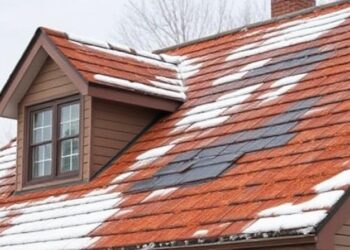Introduction to Landscape Edging
Landscape edging is a fantastic way to define garden beds, pathways, and lawn borders. By choosing the suitable edging material and design, homeowners can significantly enhance the visual appeal of their outdoor spaces. This article will guide you through everything you need to know to create a stunning garden border with landscape edging.
Edging offers an aesthetic boundary and serves practical purposes such as keeping mulch in place and preventing grass from invading your flower beds. A well-executed edging project can elevate the look of your garden, giving it a neat and structured appearance that enhances its overall appeal. Furthermore, an adequately edged garden is easier to maintain, allowing more time to enjoy your space than tending to it.
Types of Landscape Edging
Common Edging Options
Several landscape edging options are available, each with a unique aesthetic and functionality. Some common types include:
- Metal Edging: Metal edging is durable and sleek, perfect for modern gardens. It is often made from steel or aluminum, offering long-lasting durability even in harsh weather conditions. Its elegant, clean lines provide a contemporary look that works well with minimalist garden designs.
- Wood Edging offers a natural look that is best suited for and is rustic or traditional gardens. It can be crafteItous types of wood, including cedar, redwood, and pressure-treated pine. This edging blends seamlessly into natural landscapes, adding a warm and earthy feel to your garden.
- Plastic Edging is an affordable and convenient option that is easy to install and maintain. It is lightweight and flexible, making it ideal for creating curved garden borders. It’s also resistant to rot and decay, ensuring a long lifespan with minimal upkeep.
- Stone Edging adds a touch of elegance and is highly durable, ideal for various garden styles. It can be made from granite, limestone, or slate. Stone edging provides a classic and timeless look, enhancing the beauty of both traditional and modern gardens.
By understanding the different types of landscape edging available, you can select the material that best suits your garden’s design and functional needs. Each material offers distinct advantages and can contribute to creating a cohesive and visually appealing landscape.
Benefits of Using Landscape Edging
Using landscape edging offers numerous benefits that extend beyond aesthetics. According to HGTV, effective edging can help prevent the spread of grass into garden beds, reduce the need for trimming, and help keep mulch in place. Proper edging also aids in managing water runoff and erosion, making it a functional addition to any garden.
Moreover, landscape edging can add value to your property by enhancing curb appeal. A well-defined garden border creates a polished and professional look that can significantly impact your home’s overall presentation. Additionally, landscape edging helps lineate spaces within your garden, making creating distinct areas for different plants, pathways, and features more accessible.
Installation Tips and Tricks
Step-by-Step Guide
Installing landscape edging may seem daunting, but it can be a straightforward project with the right approach. Start by outlining the desired border shape using a garden hose or string. This helps to visualize the final result and make any necessary adjustments before digging. Dig a trench along this outline, ensuring it is deep enough to hold your edging material securely.
Once the trench is prepared, place the edging material and secure it with stakes or other fastening methods. Use landscape fabric underneath the edging to prevent weed growth and soil erosion for stability. This adds an extra layer of protection and keeps your garden neat. Backfill the trench with soil or gravel to stabilize the edging, ensuring it stays in place over time.
Proper installation is critical to achieving long-lasting and effective landscape edging. Planning and executing the project carefully ensures that your garden borders remain beautiful and functional for years.
Conclusion: Enhancing Your Garden’s Appeal
In conclusion, landscape edging is valuable for creating defined, aesthetically pleasing borders in your garden. By carefully selecting the appropriate materials and following the installation and maintenance tips provided, you can achieve a polished and professional look in your outdoor space.
With the right approach, landscape edging can transform your garden into a stunning and well-organized retreat. Embrace the benefits of landscape edging and see the difference it can make to your garden’s overall appeal and functionality. Whether you’re looking to add structure to your garden beds, create clear pathways, or enhance the beauty of your outdoor space, landscape edging is an excellent choice.







